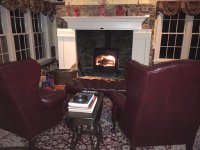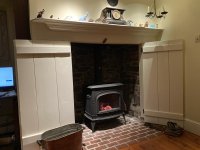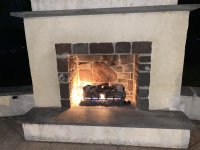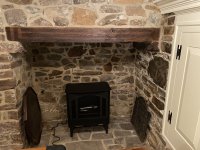Yeah, I've heard a lot of conflicting opinions and conclusions on this. It's been documented in some places that the average household firewood usage in the 18th and 19th century was something like 30 - 40 cords of wood per year.
But it's also claimed in other sources that "comfort" is a modern concept, our forefathers really weren't as concerned with keeping their homes warm, as we are today. Often cited with this, is their wardrobe, the way they wore underclothes, then their clothes, then a vest, then a jacket... usually all outer layers being wool. Seems to make sense.
(And young readers may confuse "jacket" with "coat", we use them somewhat interchangeably today. They'd also don a coat atop all of this, to go outside.)
I suppose both could be true, as I strongly suspect they were burning green wood, based on so many accounts in literature of cutting wood only shortly before burning it. Burning wood before it's lost most of its water content, is basically throwing your hard work into boiling off the water in the wood, it takes a lot of energy to boil off a small amount of water... and green firewood can contain a lot of water.
What bothers me most, no matter how much wood they actually consumed per year, is that they had to do all of it without a chainsaw. No matter how much wood you're burning, that really sucks.
My family has been in the same area for a little over 300 years, and some of the old tools that have been handed down from one generation to the next, have landed in my shop. Among them are one two-man saw, about 6 feet long, and another large one-man felling saw with holes at the tip of the blade for attaching a second helper handle. The teeth are aggressive, they'd probably cut pretty fast if re-sharpened, but the force required to push and pull one of them thru our large oak trees must have been enormous. If you were a homeowner without a few big sons, I can imagine you just got used to living cold, as the work to process enough wood to keep an old uninsulated stone house with single-pane windows warm, would have been out of the grasp of anyone over a certain age... particularly before the invention of anti-inflammatory medication.



